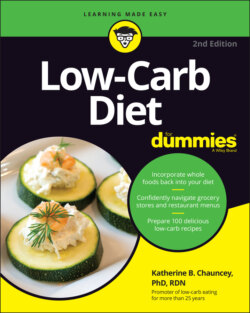Читать книгу Low-Carb Diet For Dummies - Katherine B. Chauncey - Страница 65
All Carbs Aren’t Equal: Looking at the Differences
ОглавлениеIN THIS CHAPTER
Identifying the different kinds of carbohydrates
Setting realistic carbohydrate goals
Where is carbohydrate? It’s in sugar, bread, potatoes, cereal, pasta, beans, chips, cookies, cake, soft drinks, fruit, vegetables, and dairy. It’s even a substance in your blood that your body depends on for fuel. Carbohydrate is everywhere except in meats and animal fats, and most of it is pretty tasty. Carbohydrate as a nutrient source is an important part of a healthy diet. To restrict all dietary intake of carbohydrate, the way some low-carb diets prescribe, regardless of its food source is short-sighted. Dismissing fruits, vegetables, whole grains, and beans simply because they contain carbohydrates can be disastrous to your health, in both the short run and the long run.
The intake of refined carbohydrate foods (foods that have been stripped of their nutritional value during processing), yielding little nutritive value except calories, has overwhelmed this sedentary nation. (For more on this situation, take a look at Chapter 2.) Children and athletes can consume larger amounts of starches and sugars with less harm than can relatively inactive people, but many people tend to eat a greater amount of these kinds of carbohydrates than they can handle. So, before you start to lower your carbohydrate intake, you need to get a sense of the various forms and functions of carbohydrates. This chapter can help you decide which ones to keep and which ones to control.
All dietary carbohydrates, from starch to table sugar, can be converted into glucose to be used as fuel for the body, especially the brain. How active you are governs your need for this fuel. So, if you’re not very active and all your body’s reserved carbohydrate fuel is full, you’ll store the surplus as fat. Refer to Appendix A for more details.
